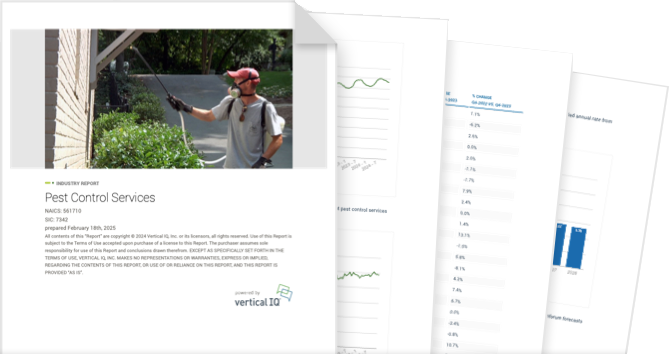US Transportation and Warehousing Sector NAICS 48

Unlock access to the full platform with more than 900 industry reports and local economic insights.
Get access to this Industry Profile including 18+ chapters and more than 50 pages of industry research.
Industry Summary
The 237,525 transportation and warehousing establishments in the US provide the transport of commodities, goods, cargo, and passengers by land, sea, or air as well as temporary and long-term storage for goods.
Variable Fuel Costs
Fuel is a major expense, and the cost can vary significantly based on global market conditions.
Supply Chain Interdependence
The transportation and warehouse sectors are integral parts of the supply chain so the sectors are dependent on the effectiveness of the other links, which include suppliers, manufacturers, wholesalers, importers, exporters, e-commerce, and distributors that may be located anywhere in the world.
Recent Developments
Dec 18, 2025 - LTL Market Disappointed in 2025
- The less-than-truckload (LTL) freight market disappointed in 2025, with volumes remaining soft and growth more muted than expected as broader trucking demand weakened from tariffs after a prolonged freight downturn. The 2023 collapse of Yellow Corp. had briefly insulated other LTL carriers, but in 2025 even major players felt the slowdown, citing weak industrial demand, high interest rates and tariff uncertainty. Pricing discipline largely held, helping carriers avoid destructive rate competition. A notable positive was the smooth rollout of National Motor Freight Classification (NMFC) updates in July, with early customer education and updated tools easing the transition. Some macro indicators offer cautious optimism, including slightly lower interest rates and steady retail sales, but executives say clear signals of a near-term rebound are lacking. Overall, carriers are operating cautiously in a shallower pool of activity, awaiting clearer economic improvements to boost shipment levels.
- Container shipping faces worsening overcapacity as new vessel deliveries slow in 2026. About 1.48 million TEUs are scheduled for delivery next year, a 17.7% drop from 2025, according to Sea-web. Global container volumes are expected to rise only 2.5%-3.5% in 2026, down from 4.5%-5.5% growth in 2025, according to shipowner association Bimco. The 1.8 million TEUs delivered this year are already straining absorption as global demand growth slowed to 2.1% by year’s end, per Container Trades Statistics, the weakest pace since February. Larger capacity waves loom, with 2.3 million TEUs due in 2027 and 3.4 million TEUs in 2028. Congestion, diversions, and slow steaming offer limited relief. With only 0.8% of the fleet idled as of mid-November and scrapping near historic lows, carriers are increasingly likely to idle and scrap ships as rates soften and costs rise.
- America’s inland‑waterways infrastructure received a C- grade in the 2025 American Society of Civil Engineers (ASCE) Report Card, an improvement from the D+ it earned in 2021. The network of 12,000 miles of inland navigation channels and 11,000 miles of intracoastal waterways plays a critical role in moving roughly $158 billion of goods each year. Despite its importance, the system faces significant challenges. Many locks and dams are well past their lifespan, with 80% of structures aging beyond their expected service periods, creating maintenance and reliability issues. The ASCE says repair and upgrade backlogs have reached $7.5 billion, while droughts and reduced water levels further strain operations. Although federal funding has increased in recent years, the pace of project delivery remains slow, often taking decades instead of years. Cost overruns and insufficient ongoing maintenance continue to limit the inland system’s efficiency, posing risks to commercial shipping.
- The trucking market slid back in Q3 as the brief spring rebound reversed, leaving carriers squeezed by weak volumes and shifting capacity, according to US Bank data. National shipment volumes fell 10.7% year-over-year, and the US Bank Shipments Index dropped 2.9% sequentially, signaling the market’s renewed contraction. Major carriers showed mixed but troubling results: Old Dominion’s LTL tonnage per day fell about 9%, TFI International’s tonnage declined 7.4%, and FedEx Freight saw average daily freight pounds slide roughly 12%. XPO offset a 6.1% tonnage drop with a 5.7% increase in LTL revenue per hundredweight, but overall demand remains soft. Shipper spend rose 2% sequentially as fleets exit capacity and fuel surcharges bite. With manufacturing contracting, truckload and LTL volumes look likely to stay under pressure into 2025 unless demand rebounds.
Industry Revenue
US Transportation and Warehousing Sector

Industry Structure
Industry size & Structure
The transportation and warehousing sector is comprised of 237,525 firms that employ 6.1 million workers and generate $1.4 trillion in annual revenue, according to government sources.
- The transportation and warehousing sector represents 3.3% of the nation's Gross Domestic Product (GDP) and employs 4% of the country's workers.
- The sector is concentrated at the top with the 20 largest firms representing 34% of revenue, but it is fragmented at the bottom.
- In addition to employer establishments, the transportation and warehousing sector has about 4 million owner-operated establishments with no employees. Subsectors with the highest numbers of nonemployer establishments are transit and ground passenger transportation (52%); truck transportation (27%); couriers and messengers (14%); and support activities for transportation (6%). The owners of nonemployer establishments typically perform the work and may outsource support functions like marketing and accounting.
- The transportation and warehousing sector gained about 12,000 firms in 2022, which equals a growth rate of about 6% of existing firms, according to the US Census.
- Employment in transportation and warehousing occupations is projected to grow by 6.5% between 2021 and 2031, slightly above the 5.3% projected growth for all occupations in that period
Industry Forecast
Industry Forecast
US Transportation and Warehousing Sector Industry Growth

Vertical IQ Industry Report
For anyone actively digging deeper into a specific industry.
50+ pages of timely industry insights
18+ chapters
PDF delivered to your inbox
